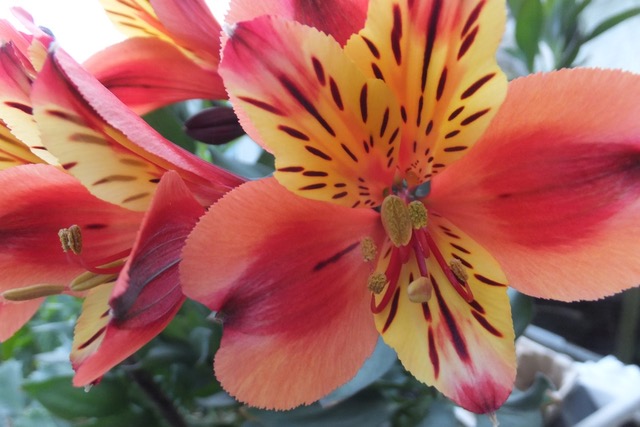Of the many greenhouse and conservatory plants few tick all boxes. That eternal quest for all-the-year-round interest in foliage, compact, neat with long lasting flowers good for cutting, lots of colour, scented in whole or part, possibly also edible, and of course, easy. Few indeed, however the Peruvian Lily does, moreover in myriad varieties only hampered by their sullied reputation from the open garden.

Introduced from the late Eighteenth Century this family Alstroemeria with dozens of species are all from South America so seldom hardy. Other than one, A. ligtu, from the highlands of Chile and Peru which although admittedly attractive became as seriously troublesome as bindweed or Japanese knotweed. So much so other delightful species are still often overlooked. Yet invasiveness is not a problem when they’re growing in tubs…
Obviously the larger the tub the larger a plant grows however as Peruvian Lilies are effectively an evergreen herbaceous perennial so these just make wider clumps. There’s many gorgeous hybrids available as well as selections from the many species most making compact half to a metre or so tall clumps.
Now although called lilies these have no bulbs but fat roots like asparagus, which love a sandy leaf mould rich decayed turf compost. These need a lot of moisture but loathe waterlogging so be sure their tubs have good drainage, and feed and water regularly.
Sadly it’s near impossible to grow the finest from seed but plants are not expensive and can simply be divided and multiplied if you want many. However you may prefer having several different as there is such an amazing choice.

At their very best early summer through into autumn when some older ones would die back however many now just slow down. Thus given enough warmth and light they can still flower even in the depths of winter. (Though reduce the waterings till growing strongly again in spring.) Few P&D problems ever bother Alstroemerias other than the usual molluscs etcetera.
Wonderfully there are few other flowers last as long when cut, and although not all are heavily scented most carry a sweet even clove like perfume. And wonder of wonders, the roots of most species are stuffed full of starch and long been cropped –they’re even a secret ‘prepper larder’.


